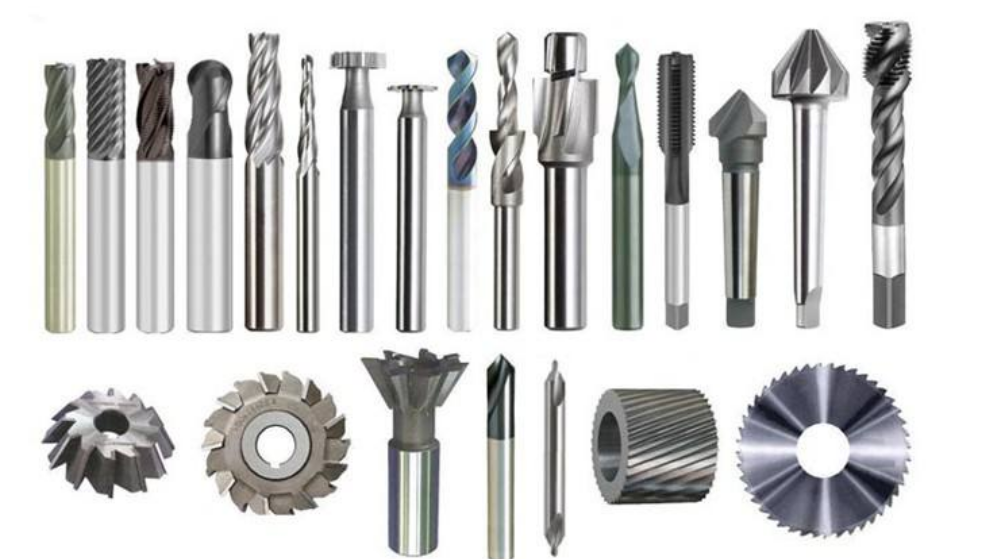Another superhard material, cubic boron nitride (CBN), synthesized by a method similar to the diamond manufacturing method, is second only to diamond in terms of hardness and thermal conductivity, and has excellent thermal stability. It can also be heated to 10000C in the atmosphere. Oxidation does not occur. CBN has extremely stable chemical properties for ferrous metals and can be widely used in the processing of steel products.
(1) Types of cubic boron nitride tools
Cubic boron nitride (CBN) is a substance that does not exist in nature, and can be divided into single crystal and polycrystalline, namely CBN single crystal and polycrystalline cubic boron nitride (Polycrystalline cubic bornnitride, referred to as PCBN). CBN is one of the allotropes of boron nitride (BN) with a structure similar to diamond.
PCBN (polycrystalline cubic boron nitride) is a polycrystalline material that sinters fine CBN materials together through bonding phases (TiC, TiN, Al, Ti, etc.) under high temperature and high pressure. Diamond tool material, it and diamond are collectively referred to as superhard tool material. PCBN is mainly used to make knives or other tools.
PCBN tools can be divided into integral PCBN inserts and PCBN composite inserts sintered with cemented carbide.
PCBN composite inserts are made by sintering a layer of PCBN with a thickness of 0.5 to 1.0 mm on cemented carbide with good strength and toughness. Its properties have good toughness, high hardness and wear resistance. It solves the problems of low bending strength and difficult welding of CBN inserts.
⑵ The main properties and characteristics of cubic boron nitride
Although the hardness of cubic boron nitride is slightly lower than that of diamond, it is much higher than other high hardness materials. The outstanding advantage of CBN is that its thermal stability is much higher than that of diamond, which can reach above 1200°C (diamond is 700-800°C). reaction. The main performance characteristics of cubic boron nitride are as follows.
①High hardness and wear resistance: CBN crystal structure is similar to diamond, with hardness and strength similar to diamond. PCBN is especially suitable for processing high hardness materials that can only be ground before, and can obtain better surface quality of workpiece.
②It has high thermal stability: the heat resistance of CBN can reach 1400~1500℃, which is almost l times higher than that of diamond (700~800℃). PCBN tools can be used for high-speed cutting of superalloys and hardened steels at a speed 3 to 5 times higher than that of carbide tools.
③Excellent chemical stability: It does not have chemical effect with iron-based materials at 1200-1300 ℃, and will not wear as sharply as diamond. At this time, it can still maintain the hardness of cemented carbide; PCBN tools are suitable for cutting hardened steel Parts and chilled cast iron, can be widely used in high-speed cutting of cast iron.
④Has good thermal conductivity: Although the thermal conductivity of CBN cannot catch up with diamond, the thermal conductivity of PCBN is second only to diamond among various tool materials, much higher than that of high-speed steel and cemented carbide.
⑤ Has a lower coefficient of friction: a low coefficient of friction can reduce the cutting force during cutting, reduce the cutting temperature, and improve the quality of the machined surface.
(3) Application of cubic boron nitride tool:
Cubic boron nitride is suitable for finishing all kinds of hardened steel, hard cast iron, superalloy, cemented carbide, surface sprayed materials and other difficult-to-cut materials. The machining accuracy can reach IT5 (the hole is IT6), and the surface roughness value can be as small as Ra1.25~0.20μm.
CBN tool material has poor toughness and flexural strength. Therefore, cubic boron nitride turning tools are not suitable for rough machining at low speed and large impact load; at the same time, it is not suitable for cutting materials with high plasticity (such as aluminum alloys, copper alloys, nickel-based alloys, steels with high plasticity, etc.), because cutting these Severe built-up edge occurs when metal is used, which deteriorates the machined surface.

